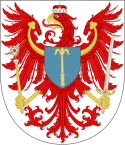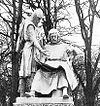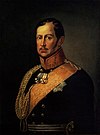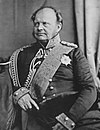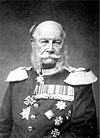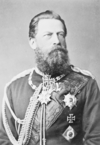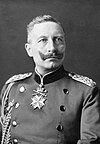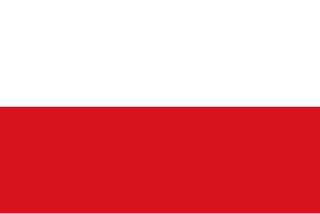| | | | | | | | | | | | | | | | | | | | | | | | | | | | | | | | | |
|
| | | | | | | | | | | | | | | | Casimir I
of Poland
1016–1058 | | | | | | | | | | | | | | |
|
| | | | | | | | | | | | | | | | | | | | | | | | | | | ASCANIAN | | | | | | | |
| | | | | |
| | | | | | | | | | | | | | Świętosława
of Poland
c. 1047 – 1126 | | Władysław I
Herman of
Poland
c. 1044 – 1102 | | | | Otto of
Ballenstedt
c. 1070 – 1123 | | Eilika of
Saxony
c. 1080 – 1142 | | | | | | | |
| |
| | | | | | | | | | | | | | | | | | | | | | | | | | | | | | | | | | | | | | | | | | | |
| | | | | |
| | | | | | | | | | | | Vladislav I
of Bohemia
c. 1065 – 1125 | | | | | Bołesław III
of Poland
1086–1138 | | Salomea
of Berg
c. 1100 – 1144 | | Albert I
the Bear
c. 1100 –
1157–1170 | | Sophie of
Winzenburg
1105–1160 | | | | | | Pribislav-
Henry of
the Hevelli
died 1150 |
| | | |
| | | | | | | | | | | | | | | | | | | | | | | | | | | | | | | | | | | | | | | | | | | | | | | | | | | | | | | | |
| | | | | | | | | | | | | | | |
| | | | | | | | | | | | | | | | | | | | | | | | | | | | | | | | | | | | | | | | | | | | | | | | | | | | | | |
| | | | | | | | | | | | | | | | | | | | | | | | | | | | | | |
| | | | | | | | Richeza
of Poland
116–1156 | | Vladislav II
of Bohemia
c. 1110 – 1174 | | Soběslav I
of Bohemia
c. 1075 – 1140 | | Mieszko III
the Old
of Poland
1126–1202 | | Judith
of Poland
c. 1332 –1171 | | Otto I
c. 1128–br>1170–1184 | | Ada of
Holland
c. 1163 – 1205 | | | | | A Wendish
princess,
identity
unknown | | Bernhard
of Anhalt
c. 1134 – 1212 |
| | | | |
| | | | | | | | | | | | | | | | | | | | | | | | | | | | | | | | | | | | | | | | | | | | | | | | | | | | | | | | | | |
| | | | | | | |
| | | | | | | | | | | | | | | | | | | | | | | | | | | | | | | | | | | | | | | | | | | | | | | | | | | | | | | | | | | | | |
| | | | | | | | | | | | | | | | | | | | | | | | | | | | | | | | | | | | | | | | | |
| | | | Frederick I
of Bohemia
1142–1189 | | Sophia
of Minsk
c. 1140 – 1198 | | Přemysl I
Ottokar of
Bohemia
c. 1155 – 1230 | | Soběslav II
of Bohemia
c. 1128 – 1180 | | Elisabeth
of Poland
c. 1152 – 1209 | | Conrad II
of Lusatia
1159–1210 | | | | | | | Otto II
the Generous
1147–1184–1205 | | | | | | | | | Albert I
of Saxony
c. 1175 – 1260 | | Odon of
Poznań
c. 1149 – 1194 | | |
| | | |
| | | | | | | | | | | | | | | | | | | | | | | | | | | | | | | | | | | | | | | | | | | | | | | | | | | | | | | | | | | | | | | |
|
| | | | Ludmilla
of Bohemia
died 1240 | | Valdemar II
of Denmark
1170–1244 | | Vaclav I
of Bohemia
c. 1205 – 1253 | | Cunigunde
of Swabia
1202–1248 | | | | Matilda
of Lusatia
1185–1225 | | | | | | Albert II
c. 1177 –
1205–1220 | | | | | | | | | | | | | | | Władysław
of Greater
Poland
c. 1190 – 1239 | | | | | | | |
| | | | | | | |
| | | | | | | | | | | | | | | | | | | | | | | | | | | | | | | | | | | | | | | | | | | | | | | | | | | | | | | | | | | | | | | | | |
| | | | | | | | | | | | | | | | | | | | | | | | | | | | | | | | | | | | | | | | | | | | | | | | | | |
| | | | | WITTELSBACH | | | | | | | | | | | | | | | | | | | | | | | | | | | | | | | | | | | | | | | | | | | | | | | | | | | | | | | | | | | |
| | | | | | | | | | | | | | | | | | | | | | | | | | | | | |
Přemysl
Ottokar II
of Bohemia
1233–1278 | | Otto II/IV
of Bavaria
1206–1253 | | | | Christopher I
of Denmark
1219–1259 | | Beatrice
of Bohemia
1225–1290 | | | | | | Otto III
the Pious
1215–1220–1267 | | | | Rudolf I
of Germany
1218–1291 | | | | Sophie of
Denmark
1217–1247 | | John I
c. 1213 –
1220–1266 | | Brigitte
Judith
of Saxony
died 1266 | | Przemysł I
of Greater
Poland
1220–1257 | | Matilda of
Brandenburg
c. 1210 – 1261 | | | | |
| | | | | | | | | |
| | | | | | | | | | | | | | | | | | | | | | | | | | | | | | | | | | | | | | | | | | | | | | | | | | | | | | | | | | | | | | | | | | | | | | | | | |
| | | | | | | | | | | | | | | | | | | | | | | | | | | | | | | | | | | | | | |
| | | | | | | | Albert III
c. 1250 –
1267–1300 | | Matilda
of Denmark
1250–1299 | | | Otto V
the Tall
1246–1267–1298 | | Judith of
Henneberg-
Coburg | | Otto VI
the Short
1255–1267–
1286–1303 | | Hedwig of
Habsburg
c. 1260 – 1303 | | Albert I
of Germany
1255–1308 | | Otto IV
of the Arrow
1238–1266–1308 | | John II
1237–1266–1281 | | | Conrad
c. 1240 –
1266–1304 | | Constance
of Greater
Poland
1246–1281 | | | | | | | | |
| | | | | |
| | | | | | | | | | | | | | | | | | | | | | | | | | | | | | | | | | | | | | | | | | | | | | | | | | | | | | | | | | | | | |
| | | | | | | | | | | | | | | | | | | | | | | | | | | |
| | | | | | | | | | | | | | | | | | | | | | | | | | | | | | | | | | | | | | | | | | | | | | | | | | | | | | | | | | | | | | | | | | | | |
| | | | | | | | | | | | | | | | | | | | | |
Vaclav II
of Bohemia
1271–1305 | | Louis II of
Bavaria
1229–1294 | | | | | | John III
of Prague
1244–1267–1268 | | | | Beatrice of
Brandenburg
c. 1270 – 1316 | | Bolko I of
Jawor and
Świdnica
1252/6–1301 | | | Herman
the Tall
1275–1299–1308 | | Anne of
Austria
1275–1327 | | | | | | Albert II of
Austria
1298–1358 | | | | | | | | | | | | Adelaide of
Brunswick-
Lüneburg
1244–1274 | | | | |
| | | |
| | | | | | | | | | | | | | | | | | | | | | | | | | | | | | | | | | | | | | | | | | | | | | | | | | | | | | | | | | | | | | | | | |
| | | | | | | | | | | | | | | | | | | | | | | | | | | | | | | | | | | | | |
| | | | | LUXEMBOURG | | | | | | | | | | | | | | | | | | | | | | | | | | | | | | | | | | | | | | | | | | | | | | | | | | | | | | | | | | |
| | | | | | | | | | | | | | | | | | | | | | | | | | | | | | | | | | | | | | | | | | | |
Elizabeth
of Bohemia
1292–1330 | | John the
Blind of
Bohemia
1296–1346 | | Bernard II of
Jawor and
Świdnica
c. 1291 – 1326 | | Margaret II
of Hainault
1311–1356 | | Louis IV,
Holy Roman
Emperor
| | Beatrice
of Silesia
1290–1320 | | Nicholas I
of Troppau
c. 1255 – 1318 | | John V
the Illustrious
1302–1308–1317 | | Agnes of
Brandenburg-
Salzwedel
1296–1334 | | Waldemar
the Great
1280–1317–1319
Stendal
1308–1317 | | | Henry I
Lackland
1256–1317–1318
Stendal
1266–1317 | | Agnes of
Bavaria
1276–1345 | | | | Adelaide
of Hesse
1268–1317 |
| | | | | | | | |
| | | | | | | | | | | | | | | | | | | | | | | | | | | | | | | | | | | | | | | | WETTIN | | | | | | | | | | | | | | | | | | | | | | |
| | | | | | | | | | | | | | | | | | | | | | | | | | | | | | | | | | | | | | | | | | | | | | |
| | | | | Otto V
the Lazy
1346–1351–1379 | | Henry II of
Świdnica
1316–1345 | | Louis II
the Roman
1328–1351–1365 | | Stephen II
of Bavaria
1319–1375 | | Louis I
1315–1323–
1351–1361 | | Nicholas II
of Troppau
1288–1365 | | Matilda
of Bavaria
1313–1346 | | Frederick II
of Meissen
1310–1349 | | Elisabeth
of Henneberg-
Schleusingen
1318–1377 | | | | | Henry II
the Child
1308–1319–1320 | | Frederick I
of Celje
c. 1300 – 1359 | |
| |
| | | | | | | | | | | | | | | | | | | | | | | | | | | | | | | | | | | | | | | | | | | | | | | | | | | | | | | | | | |
| | | | | | | | | | | | | | | | | | | | | | | | | | | | | | | | | | | | | | | | | | | | | |
| | | | | | | | | | | | | | | | | | | | | | | | | | | | | | | | | | | | | | | | | | | | | | HOHENZOLLERN | | | | | | | | | | | | |
| | | | | | | | | | | | | | | | | | | | | | | | | | | | | | | | |
Anna of
Świdnica
1339–1362 | | Charles IV,
Holy Roman
Emperor
1316–1378 | | Elizabeth
of Pomerania
c. 1347 – 1393 | | | Albert III
of Austria
1349–1395 | | Frederick
of Bavaria
1339–1393 | | John Henry
of Moravia
1322–1375 | | Margaret
of Opava
1330–1363 | | Frederick III
of Thuringia
1332–1381 | | Elisabeth
of Meissen
1329–1375 | | Frederick V
of Nuremberg
1333–1398 | | False Waldemar
r. 1348–1350,
died 1356 | | Hermann I
of Celje
1333–1385 | | |
| | | | | | | |
| | | | | | | | | | | | | | | | | | | | | | | | | | | | | | | | | | | | | | | | | | | | | | | | | | | | | | | | | | | |
| | | | | | | | | | | | | | | | | | | | | | | | | | | | | | | | | | | | | | | | | | | |
| | | | | | | | | | | | | | | | | | | | | | | | | | | | | | | | | | | | | | | | | | | | | | | | | | | | | | | | | | | | | | | | | | | | | | | | |
| | | | | | | | | | | | | | | | | | | | | | | | | | | | | | | | | | | | | | | | | | | | | | | | | | | | | | | | | | | |
| | | Wenzel
the Idle
1361–1373 –
1378–1419 | | | | | Herman II
of Celje
c. 1360 – 1435 | | Albert IV
of Austria
1377–1404 | | | | | | | | Jobst
1354–1397–1411 | | | | Frederick I
of Saxony
1370–1428 | | Elisabeth
of Bavaria
1383–1442 | | Frederick I
1371–1415–1440 | | Elisabeth
of Nuremberg
1358–1411 | | | | Ulrich I
of Celje
1331–1368 | | | | | | | | Margaret of
Hohenzollern-
Neuburg
1367–1406 |
| |
| | | | | | | | | | | | | | | | | | | | | | | | | | | | | | | | | | | | | | | | | | | | | | | | | | | | | | | | | | | | | | | | | | | | | | |
| | | | | | | | | | | | | | | | | | | | | | | | | | | | | | | | |
| | | | | | | | | | | | | | | | | | | | | | | | | | | | | | | | | | | | | | | | | | | | | | | | | | | | | | | | | | | | | | | | | | | | | | HESSE |
| | | | | | | | | | | | |
Leopold III
of Austria
1351–1386 | | | | Sigismund I
1368–1378 –
1388–1411 –
1415–1437 | | Barbara
of Cilli
1392–1451 | | | | | | | | | | | | | | | Catherine
of Saxony
1421–1476 | | Frederick II
Irontooth
1413–1440–1471 | | | John VI
the Alchemist
1406–1440–1457
Brandenburg
1426–1440 | | | | | Margaret of
the Palatinate
1376–1434 | | | | | William
of Celje
1361–1392 | | | | Anna of
Saxony
1420–1462 | | Louis I
of Hesse
1402–1458 |
| | | | |
| | | | | | | | | | | | | | | | | | | | | | | | | | | | | | | | | | | | | | | | | | | | | | | | | | | | | | | | | | | | | | | | | | | | | |
| | | | | | | | | | | | | | | | | | | | | | | | | | | |
Ernest
the Iron
of Austria
1377–1424 | | Cymburgis
of Masovia
1394–1429 | | Elisabeth of
Luxembourg
1409–1442 | | Albert V
of Austria
1397–1439 | | Sophia of
Halshany
1405–1461 | | Władysław II
Jagiełło
of Poland
c. 1352 – 1434 | | Anna of
Cilli
c. 1381 – 1416 | | Albert III
of Bavaria
1401–1460 | | Frederick II
of Saxony
1412–1464 | | | | | | | Catherine
of Lorraine
1431–1457 | | William III
of Meissen-
Thuringia
1425–1482 | | | | | | | | | | | | | |
| | | | | | |
| | | | | | | | | | | | | | | | | | | | | | | | | | | | | | | | | | | | | | | | | | | | | | | | | | | | | | | | | | | | | | | | | | | | | | |
| | | | | | | | | | | | | | | | | | | | | | | | | | | | | | | | | | | | | | | | | | | | | | | | | |
| | | | | | | | | | | | | | | | | | | | | | | | | | | | | | | | | | | | | | | | | | | | | | | | | | | | | | | | | | | | | | | | | | | | | |
| | | | | | | | | | | | | | | | | | | | | | | | | | | | | | | | | | | | | | | | | | | | | | | | | | | | | | | |
| | | Frederick III,
Holy Roman
Emperor
1415–1493 | | Eleanor
of Portugal
1434–1467 | | | Elizabeth
of Austria
1436–1505 | | | | | | Casimir IV
Andrew of
Poland
1427–1472 | | Frederick
Magnus I of
Solms-Laubach
1521–1561 | | Agnes
of Wied | | Anna of
Saxony
1437–1512 | | | | Albert IV
Achilles
1414–1471–1486
Ansbach
1440–1486
Kulmbach
1457–1486 | | Margaret
of Baden
1431–1457 | | | | | Ernest
of Saxony
1441–1486 | | Elisabeth
of Bavaria
1443–1484 | | Louis II of
Lower Hesse
1438–1471 |
| | | | | | | | | | | | | | | | | |
| | | | | | | | | | | | | | | | | | | | | | | | | | | | | | | | | | | | | | | | | | | | | | | | | | | | | | | | | | | | | | | | | | | | | | | | | |
| | | | | | | | | | | | | | | | | | | | | | | | | | | | | | | | | | | | | | | | | | | | | | | | | | | | |
Albert III
of Saxony
1443–1500 | | | Cunigunde
of Austria
1465–1520 | | Albert IV
of Bavaria-
Munich
1447–1508 | | | | Sophie of
Poland
1464–1512 | | | | | | | | | | Frederick II
the Elder
1450–1486–1535
Kulmbach
1495–1515 | | Sigismund II
1468–1486–1495 | | Ursula of
Brandenburg
1488–1510 | | John VII
Cicero
1455–1486–1499 | | Margaret
of Saxony-
Thuringia
1449–1501 | | Christina
of Saxony
1461–1521 | | John of
Saxony
1468–1532 | | William II
of Hesse
1469–1509 |
| | | | | | | | | | | | | |
| | | | | | | | | | | | | | | | | | | | | | | | | | | | | | | | | | | | | | | | | | | | | | | | | | | | | | | | | | | | | | | | | | | |
| | | | | | | | | | | | | | | | | | | | | | | | | | | | | | | | | | | | | | | | | | | | | | | | | | | | |
| | | | | | | | | | | | | | | | | | | | | | | | | | | | | | | | | | | | | | | | | | | | | | | | | | | | | | | | | | | | | | | | | | | | | | | | | | |
| | | | | | | | | | | | | | | | | | | | | | | | | | | | | | | | | | | | | | | | | | | | | | | | | | | | | | | | |
Henry IV
of Saxony
1473–1541 | | | George the
Bearded
of Saxony
1471–1539 | | | | | Susanna
of Bavaria
1502–1543 | | | | | | Casimir
1481–1515–1527 | | | | | | | | | | | Albert
of Prussia
1490–1568 | | Charles I of
Münsterburg-
Oels
1476–1536 | | Sophie of
Brandenburg-
Ansbach-
Kulmbach
1485–1537 | | Joachim I
Nestor
1484–1499–1535 | | Elizabeth
of Denmark
1485–1555 | | John Frederick
1503–1554
regent
1543–1547 | | | | Anna of
Brandenburg
1487–1514 |
| | | | | | | |
| | | | | | | | | | | | | | | | | | | | | | | | | | | | | | | | | | | | | | | | | | | | | | | | | | | | | | | | | | | | | | | | | | | | | | | | |
| | | | | | | | | | | | | | | | | | | | | | | | | | | | | | | | | | | | | | | |
| | | | | | | | | | | | | | | | | | | | | | | | | | | | | | | | | | | | | | | | | | | | | | | | | | | | | | | | | | | | | | | | | | | | | | | | | | | | |
| | | | | | | | | | | | | | | | | | | | | | | | | | | | | | | | | | | | | | | | | | | | | | |
| | | | | | | | | | | | | | | | | | | | | | | | | | | | | | | | | | | | | | | | | | | | | | | | | | | | | | | | | | | | | | | | | | | | | | | | | | | | | | |
| | | | | | | | | | | | | | | | | | | | | | | | | | | | | | | | | | | | | | | | | | | | | | | | | | | | | | | | |
Maurice
1521–1571
regent
1547–1548 | | | Christine
of Saxony
1505–1549 | | Philip
1504–1567
regent
1543–1548 | | | | Albert V
Alcibiades
1522–1527 –
1553–1557 | | Emilie
of Saxony
1516–1591 | | George I
the Pious
1484–1536–1543
Kulmbach, regent
1527–1541 | | Hedwig of
Münsterberg-
Oels
1508–1531 | | | | | Magdalena
of Saxony
1507–1534 | | Joachim II
Hector
1505–1535–1571
Ansbach, regent
1543–1548 | | | | | Catherine of
Brunswick-
Wolfenbüttel
1518–1574 | | John VIII
1513–1535–1571 | | | | | | | | Hedwig
Jagiellon
1513–1573 | | | | |
| | | | | | | | | |
| | | | | | | | | | | | | | | | | | | | | | | | | | | | | | | | | | | | | | | | | | | | | | | | | | | | | | | | | | | | | | | | | | | | | | | | | | | | |
| | | | | | | | | | | | | | | | | | | | | | | | | | | | | | | | | | | | | | | | | | | | | | | | | | | | | | | | | | | | |
| | | | | | | | | | | | | | | | | | | | | | | | | | | | | | | | | | | | | | | | | | | | | | | | | | | | | | | | | | | | | | | | | | | | | | | | | | | | |
| | | | | | | | | | | | | | | | | | | | | | | | | | | | | | | | | | | |
| | | | | | | | | | | | | | | | | | | | | | | | | | | | | | | | | | | | | | | | | | | | | | | | | | | | | | | | | | | | | | | | | | | | | | | | | | | | | | | | |
| | | | | | | | | | | | | | | | | | | | | | | | | | | | | | | | |
Elisabeth
of Solms-
Laubach | | John George I
of Solms-
Laubach
1547–1600 | | Margaret
of Schönburg-
Glauchau | | Elisabeth
of Anhalt-
Zerbst
1563–1607 | | | Elisabeth of
Brandenburg-
Küstrin
1540–1578 | | George
Frederick
the Elder
1539–1547–1603
Kulmbach
1557–1603 | | Sabina of
Brandenburg-
Ansbach
1529–1575 | | | | | | | | | John George
1525–1571–1598 | | Sophie of
Legnica
1525–1546 | | Albert
Frederick
of Prussia
1553–1618 | | | | | Marie of
Brandenburg-
Kulmbach
1519–1567 | | Hedwig of
Brandenburg
1540–1602 | | Christian III
of Denmark
1503–1559 | | | | | |
| | | | | | | | | | | | |
| | | | | | | | | | | | | | | | | | | | | | | | | | | | | | | | | | | | | | | | | | | | | | | | | | | | | | | | | | | | | | | | | | | | | | | | | | | | |
| | | | | | | | | | | | | | | | | | | | | | | | | | | | | | | | | | | | | | | | | | | | | |
| | | | | | | | | | | | | | | | | | | | | | | | | | | | | | | | | | | | | | | | | | | | | | | | | | | | | | | | | | | | | | | | | | | | | | | | | | | | | | | |
| | | | | | | | | | | | | | | | | | | | | | | | | | | | | | | | | |
Agnes
of Sayn-
Wittgenstein | | Henry William I
of Solms-
Sonnerwalde | | Sophie
of Solms-
Laubach
1594–1651 | | Joachim Ernst
1583–1603–1625 | | Christian
1581–1603–1655 | | Marie of
Prussia
1579–1649 | | | | Barbara
of Hesse
1536–1597 | | | | | Eleanor
of Prussia
1583–1607 | | Joachim
Frederick
1546–1598–1608 | | | | | | Catherine of
Brandenburg-
Küstrin
1549–1602 | | Louis VI of the
Palatinate
1539–1583 | | | Maria of
Brunswick-
Lüneburg
1566–1626 | | John II of
Schleswig-
Holstein-
Sonderburg
1545–1622 | | Anna Sophia
of Prussia
1527–1591 |
| | | | | | | | | | |
| | | | | | | | | | | | | | | | | | | | | | | | | | | | | | | | | | | | | | | | | | | | | | | | | | | | | | | | | | | | | | | | | | | | | | | | | | | | | | |
| | | | | |
| | | | | | | | | | | | | | | | | | | | | | | | | | | | | | | | | | | | | | | | | | | | | | | | | | | | | | | | | | | | | | | | | | | | | | | | | | | | | | | | | |
| | | | | | | | | | | | | | | | | | | | | | | | |
Amaila
of Solms-
Braunfels
1602–1675 | | Anna Sybilla
of Solms-
Sonnenwalde | | | | | Frederick IV
1616–1625–1634 | | Sophie of
Brandenburg-
Ansbach
1614–1646 | | Erdmann
August of
Brandenburg-
Bayreuth
1615–1651 | | Frederick IV
of the
Palatinate
1574–1610 | | Geogre Albert
of Brandenburg-
Bayreuth-
Kulmbach
1619–1666 | | Anna of
Prussia
1576–1625 | | | | | | | | John Sigismund
1572–1608–1619 | | Frederick I
of Württemberg
1557–1608 | | | | Magdalene of
Brandenburg
1582–1616 | | | | | | | | | | | | | | | | |
| | | | | | | | | |
| | | | | | | | | | | | | | | | | | | | | | | | | | | | | | | | | | | | | | | | | | | | | | | | | | | | | | | | | | | | | | | | | | | | | | | | | | | | | | | |
| | | | | | | | | | | | | | | | | | | | |
| | | | | Sophie
Margarete of
Oettingen-
Oettingen | | Albert VI
1620–1634–1667 | | Barbara of
Württemburg
1593–1627 | | Christian
Ernst
1644–1655–1712 | | Sophie
Louise of
Württemburg
1642–1702 | | | | Christian
Henry of
Brandenburg-
Bayreuth-
Kulmbach
1661–1708 | | | | | | | George
William I
1595–1619–1640 | | | | | | Elizabeth
Charlotte
of the
Palatinate
1597–1660 | | Anne Eleonore
of Hesse-
Darmstadt
1601–1659 | | | Sophie
Hedwig
of Saxe-
Lauenburg
1601–1660 | | Philip of
Schleswig-
Holstein-
Sonderburg-
Glücksburg
1584–1663 | | John VII of
Mecklenburg
1558–1592 | |
| | | | | | | | | | | |
| | | | | | | | | | | | | | | | | | | | | | | | | | | | | | | | | | | | | | | | | | | | | | | | | | | | | | | | | | | | | | | | | | | | | | | | | | | | |
| | | | | | | | | | | | | | | | | | | | | | | | | | | | | | | | | | | | | | | | | | | | | | | | | | | | | | |
| | | | | | | | | | | | | Frederick VI
of Baden-
Durlach
1617–1677 | | | | George
William II
1678–1712–1726 | | Dorothea of
Schleswig-
Holstein-
Sonderburg-
Glücksburg
1636–1689 | | George
Frederick
Charles
1688–1726–1735 | | | Henriette
Catherina
of Nassau
1637–1708 | | Louise
Henriette
of Nassau
1627–1667 | | Frederick
William I
the Great
1620–1640–1688 | | Dorothea of
Schleswig-
Holstein-
Sonderburg-Beck
1685–1761 | | Ernest
Augustus
of Hanover
1629–1698 | | | | | | | | | | | John
Albert II of
Mecklenburg
1590–1636 |
| | | | | |
| | | | | | | | | | | | | | | | | | | | | | | | | | | | | | | | | | | | | | | | | | | | | | | | | | | | | | | | | | | | | | | | | | | | | | | | |
| | | | |
| | | | | | | | | | | | | | | | | | | | | | | | | | | | | | | | | | | | | | | | | | | | | | | | | | | | | | | | | | | | | | | | | | | | | | | | | | | | | | |
| | | | | | | | | | | | | | | | | | | | | | | | | | | | | | | | | | | | |
| | | | Eleonore
Juliane of
Brandenburg-
Ansbach
1663–1724 | | Eleonore
Erdmuthe of
Saxe-Eisenach
1662–1696 | | John Frederick
1654–1667–1686 | | Joanna
Elisabeth
of Baden-
Durlach
1651–1680 | | | Frederick
Christian
1708–1763–1769 | | Frederick VI
1711–1735–1763 | | Johanna
Charlotte of
Anhalt-Dessau
1682–1750 | | Philip William
1669–1692–1711 | | Frederick V
1657–1688–1713 | | | | | | | | Sophia
Charlotte
of Hanover
1668–1705 | | | Sophia
Dorothea of
Brunswick-
Lüneburg-Celle
1666–1726 | | | | | | Elisabeth
Sophie of
Mecklenburg
1613–1676 | |
| | | | | | | | | | | | | |
| | | | | | | | | | | | | | | | | | | | | | | | | | | | | | | | | | | | | | | | | | | | | | | | | | | | | | | | | | | | | | | | | | | | | | | |
| | | | | | | | | | | | | | | | | | | | | | | | | | | | | | | | | | | | | | | | | | | |
| | | | | | | | | | | | | | | | | | | | | | | | | | | | | | | | | | | | | | | | | | | | | | | | | | | | | | | | | | | | | | | | | | | |
| | | | | |
| | | | Christine
Charlotte
regent
1694–1723–1729 | | | | William
Frederick
1686–1703–1723 | | George
Frederick II
1678–1692–1703 | | | | | Ferdinand
Albert I of
Brunswick-
Wolfenbüttel-
Bevern
1636–1687 | | | | | | Frederick
William II
1700–1711–1771 | | Frederick
Henry
1709–1771–1788 | | | | | | | Frederick
William III
the Soldier
1688–1713–1740 | | | | | | | | Sophia
Dorothea
of Hanover
1687–1757 | | |
| | | | | | | | | | | |
| | | | | | | | | | | | | | | | | | | | | | | | | | | | | | | | | | | | | | | | | | | | | | | | | | | | | | | | |
| | | | | | | | | | | | | | | | | | | | | | | | | | | | | | | | | | | | | | | | | |
| | | | | | | | | | | | | | | | | | | | | | | | | | | | | | | | | | | | | | | | | | | | | | | | | | | | | | | | | | | |
| | | | | | | | | | | | | | | | | | | | | | | | | | | | |
| | | | | | | Charles
William
Frederick
the Wild
1712–1729–1757 | | Frederica
Louisa of
Prussia
1714–1784 | | Philippine
Charlotte
of Prussia
1716–1801 | | Charles I of
Brunswick-
Wolfenbüttel
1713–1780 | | Luise of
Brunswick-
Wolfenbüttel
1722–1790 | | Augustus
William of
Prussia
1722–1758 | | | | Schwedt
annexed by
the Electorate | | | | | | | | Elisabeth
Christine of
Brunswick-
Wolfenbüttel
1715–1797 | | Frederick VII
the Great
1712–1740–1786 | |
| | | | | | |
| | | | | | | | | | | | | | | | | | | | | | | | | | | | | | | | | | | | | | | | | | | | | | | | | | | | | | | | | |
|
| | | | | | | | | Alexander
1736–1757 –
1791–1806
Bayreuth
1769–1791 | | | | | | Elisabeth
Christine of
Brunswick-
Wolfenbüttel
1746–1840 | | | | | | Frederick
William IV
1744–1786–1797 | | Frederica
Louisa of
Hesse-Darmstadt
1751–1805 | | | | | | | | | | | | | | | | | | | | | | |
| | | | | | |
| | | | | | | | | | | | | | | | | | | | | | | | | | | | | | | | | | | | | | | | | | | | | | | | | | | | | | | | |
|
| | | | | | | | | Ansbach and
Bayreuth sold
to Prussia | | | | | | | | | | | | | | | | Frederick
William V
1770–1797 –
1806–1840 | | | | | | | | | | | | | | | | | | | | | |
|
| | | | | | | | | | | | | | | | | | | | | | | | | | | | | | | | | | | | | | | | | | | | | | | | | | | |
|
| | | | | | | | | | | | | | | | | | | | | | | | | | | Brandenburg
definitively
annexed
by Prussia | | | | | | | | | | | | | | | | | | | | |
|
